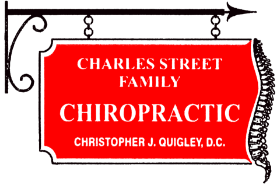During this time of dealing with the Covad-19 it is vital that you take the steps to stay strong. Your immune system is designed to handle these types of issues if you can rev it up to meet the challenge. My recommendations to do that include proper sleep, vitamin D3 and getting your spine adjusted.
First of all is sleep. According to the National Sleep Foundation, getting enough sleep is a major requirement for a strong immune system.
“When it comes to your health, sleep plays an important role. While more sleep won’t necessarily prevent you from getting sick, skimping on it could adversely affect your immune system, leaving you susceptible to a bad cold or case of the flu. To keep yourself sniffle-free this season, here’s what you need to know. Without sufficient sleep, your body makes fewer cytokines, a type of protein that targets infection and inflammation, effectively creating an immune response. Cytokines are both produced and released during sleep, causing a double whammy if you skimp on shut-eye. To stay healthy, especially during the influenza season, get the recommended seven to eight hours of sleep a night. This will help keep your immune system in fighting shape, and also protect you from other health issues including heart disease, diabetes, and obesity. If your sleep schedule is interrupted by a busy workweek or other factors, try to make up for the lost rest with naps.”
Vitamin D3 has long been known as a significant immune system booster which can significantly help you fight off colds and flu’s. As far back as 1923, researchers figured out the link between sunshine curing tuberculosis. My favorite reference is titled
This article states: “The occurrence of the common cold and influenza shows clear seasonality. The cold and influenza season corresponds to the season of vitamin D insufficiency.” “The lack of vitamin D during the winter may be a ‘seasonal stimulus’ to the infectivity of the influenza virus.”
“Vitamin D is produced in the skin when sunlight is absorbed. Thus, vitamin D levels, or serum 25-hydroxyvitamin D (25-OHD), fluctuate seasonally.” Vitamin D has important functions in the immune system, specifically the innate immune system. These authors conducted a 3-year randomized controlled trial to test the hypothesis that vitamin D3 supplementation would prevent bone loss in postmenopausal women. A total of 208 women were randomized to receive 800 IU of vitamin D3 (n=104) or placebo (n=104). After 2 years, the vitamin D3 dose was increased to 2000 IU in the active group. Only one subject had a cold/influenza while on 2,000 IU of vitamin D.
The chiropractic adjustment is the third and most important item you can do to rev up your immune system. The 1918 flu epidemic is how chiropractic got its start. In the early 1900’s chiropractic was a small profession numbering about 1000 practicing doctors. When the flu epidemic struck, most people under chiropractic care did not get the flu. In the small percentage that did get the flu, they had a 99% survival rate. Contrasting to the people under medical care, the majority got the flu and approximately 9.5% of those people perished. This is documented in the book written in 1978 by Walter R. Rhodes, D.C., in his book titled: “The Official History of Chiropractic in Texas. Dr. Rhodes says that the chiropractic success during the 1917-1918 influenza epidemic was one of the three great survival factors for the chiropractic profession. Due to this success, thousands of people attended chiropractic college. This peaked in 1927 with Palmer Chiropractic College topping the 4000 student mark in that year. To give you perspective, it took 80 years for a second chiropractic college to achieve that level of student enrollment.
The best research paper to substantiate these numbers comes from the osteopathic literature. At the time, no research publications would publish papers from the chiropractic profession. The article titled ” Osteopathic Success in the Treatment of Influenza and Pneumonia” published in the Journal of the American Osteopathic Association in 1919, estimates a 5-6% death rate in the general population. The fatality rate of those under osteopathic/manipulative care had a death rate of .25%.
Do these things to keep your body strong and those nasty viruses at bay.
Yours in Health,
Christopher Quigley, D.C., C.C.S.T.
